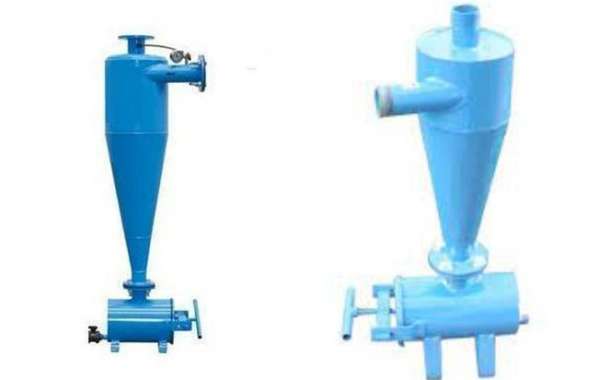Cyclone separators are the simplest and least expensive dust collection devices for industrial air pollution control. Operation and maintenance are simple because they have no moving parts. This article discusses the most common Cyclone Collector design, the involute entry type with a counterflow, coaxial clean air outlet.
Why are dust collectors needed?
Dust collectors are often needed in plastics processing facilities because conventional high-speed vacuum-conveying systems move plastic pellets and flakes so quickly that some are damaged, causing dust and other problems. Pellets of soft materials may bump on conveying tube surfaces, heat up due to friction, and leave smears of material that become stringy “angel hair.” Pellets of harder materials may chip or shatter when they hit tube walls or corners, creating “fines” such as small pieces, particles or dust.
Angel hair, fines, and dust should be removed before plastic resin is processed into parts. Otherwise, they will melt much more quickly than undamaged pellets and could begin to burn, leaving blackened or discolored streaks in finished parts. To remove them, processors often add dust collectors or de-dusting systems to their vacuum conveying systems. Cyclone dust collectors supplement the performance of dust-filtering screens that are provided with conveying systems; they can substantially improve dust collection efficiency and reduce overall maintenance requirements.
How do Cyclones Work?
Generally, all cyclone separators feature an indirect path from hose intake to hose outlet. That is, airflow and particle travel is not a short distance from inlet to outlet. Airflow starts at the inlet and follows along a downwards helical path until it reaches the bottom of the conical section. The vertical upwards return flow towards the vacuum outlet starts at the center of the cyclone near the bottom.
The heaviest debris – wood chips, shavings, and such – quickly fall to the bottom of the separator. These larger particles collide with the cyclone walls, lose speed, and gravity helps pull them down towards the collection container.
Lighter and medium-sized particles continue on the helical airflow path along the walls of the cyclone or separator. At the bottom of the cyclone the conical section helps to further separate medium-sized particles from the airflow.
Some lighter particles will remain in the helical airflow, some will be separated with the medium-sized particles. The smaller radius of the taper means a greater wall-hugging force that keeps the smaller particles away form the center.
At the bottom of the cyclone taper, a portion of the lighter particles will drop to the collection container but some will be drawn up towards the vacuum source.
Usually it is only some of the finest particles that carry through to the dust collector or shop vacuum. But if the intake rate is too quick, more dust will make it to the vacuum.
Cyclone separators might lead to a slight reduction in vacuum power, but even if by a noticeable amount this is outweighed by the benefits. The amount of reduction would certainly be less than the drop that would be caused by a quickly-clogged filter or collection bag.
That's all information, if you want to know more cyclone collector information, please visit the professional cyclone collector and Bucket Elevator Manufacturer in China https://www.sunwellpulverizer.com/product/collector-series/xfg-cyclone-collector.html








